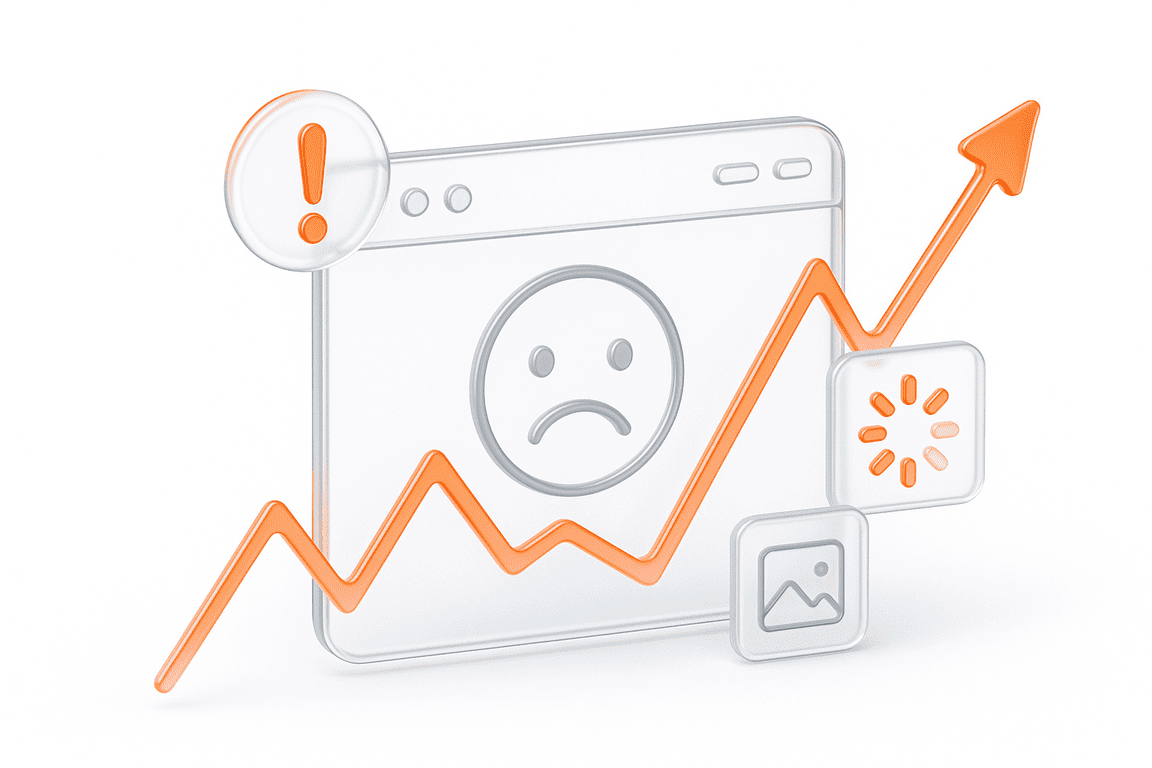Software rarely fails because of a single heavy hit — it fails slowly, under constant pressure. That’s where soak testing in software testing comes in. A soak test measures how your system behaves under expected load for an extended period, helping uncover memory leaks, resource exhaustion, and gradual slowdowns that quick checks can miss.
In this guide, we’ll explain what soak testing is, the common issues it detects, when to use it, and how to run it effectively. You’ll also see how it differs from spike testing and stress testing, plus real benefits you gain from running it before production.
What is Soak Testing?
Soak testing is a performance testing method where a system is placed under a constant, expected load for an extended duration — often several hours or days. The point isn’t to overload the system, but to see how well it sustains day-to-day traffic over time.
The key difference from a regular load test is duration. A short test might show that response times stay under a second for 30 minutes, but that doesn’t prove much about what happens after eight hours of use. Memory consumption can creep upward, open connections may accumulate, and background jobs like log rotation or batch processing can interfere with performance in ways you’d never see in a quick run.
A soak test in performance testing is designed to uncover these long-horizon issues. Engineers monitor not only throughput and latency, but also server metrics such as memory allocation, garbage collection cycles, CPU utilization, and database connection pools. If the system degrades slowly, you’ll see it reflected in these metrics long before users start complaining.
This makes soak testing especially useful for systems that are expected to run continuously: payment gateways, messaging platforms, SaaS backends, or any service where downtime or slowdown translates directly into cost. In those cases, a soak test validates not just peak performance, but the reliability of the entire runtime environment.
What are the Common Issues that Soak Testing Detects?
The real value of a soak test comes from catching problems that only reveal themselves over time. Short performance runs often look fine, but leave hidden issues undiscovered until the system has been live for hours or days. Here are the most common ones engineers watch for.
Memory Allocation Problems
Gradual memory leaks can stay hidden during quick load tests but become critical during long execution. Unreleased objects, poor garbage collection behavior, or unoptimized caching strategies can slowly increase memory usage until the system becomes unstable.
Database Resource Usage
Databases often show degradation after extended periods of sustained queries. Issues include unreleased connections in the pool, long-running transactions, or inefficient queries that multiply under steady traffic. A soak test highlights when these inefficiencies cause performance dips or lock contention.
Deterioration in Performance
Even if latency looks good at the start, it may slowly increase. This can happen because of accumulating logs, growing thread counts, or resource contention. The effect is subtle at first but becomes noticeable after hours of use.
Connection Errors Between Tiers
Multi-tier applications rely on stable communication between services. Improperly closed sockets, orphaned threads, or misconfigured timeouts can cause errors that build up slowly, eventually leading to bottlenecks or failures in the system’s request flow.
Stability Under Extended Workload
Some systems are designed for bursts of load but struggle with consistency over time. A soak test shows whether the application can maintain stable throughput, error rates, and resource usage without degradation across long test windows.
When to Do Soak Testing?
Soak testing makes sense when the cost of long-term instability is higher than the cost of testing. These are the situations where it becomes essential.
Key Benefits of Soak Testing
A soak test helps engineers validate system stability in ways short-term testing can’t. Here are the most important benefits:
Differences in Soak Testing and Spike Testing vs. Stress Testing
Performance testing comes in many forms, and while they may overlap, each has a distinct goal. Soak testing focuses on long-term stability, while spike testing and stress testing measure different behaviors under unusual conditions.
| Aspect | Soak Testing | Spike Testing | Stress Testing |
| Load Pattern | Constant, expected load applied for hours or days | Sudden, sharp increases in load followed by rapid decreases | Gradual increase beyond expected load until the system fails |
| Purpose | Detect long-term issues like memory leaks, resource leaks, slow degradation | Validate how the system handles sudden traffic bursts | Identify maximum capacity and observe failure behavior |
| Duration | Extended (often 8–72 hours) | Short (minutes to an hour) | Medium (until crash point, usually hours) |
| Common Metrics | Memory usage trends, sustained throughput, error rate stability | Response time during peaks, recovery time after spike | Throughput at peak, failure thresholds, error conditions |
| When to Use | Before production release of systems requiring continuous uptime | For apps expecting unpredictable surges (ticket sales, flash sales) | For capacity planning and validating failover/recovery mechanisms |
| Risk Mitigated | Slow failures unnoticed in short tests | Crashes caused by load bursts | Unexpected breakdowns under extreme load |
How to Run a Soak Test
Running a soak test is less about complexity and more about patience and discipline. The steps below outline a typical process.
Soak Testing Example
Consider an online ticketing platform preparing for a three-day sales event. Engineers expect around 500 requests per second during peak hours, with users searching for events, selecting seats, and completing payments.
To validate stability, the team sets up a soak test that simulates this traffic pattern at a constant rate for 24 hours. During the first six hours, metrics look normal: response times average 180 ms, and error rates stay under 0.05%. But as the test progresses, memory usage on the application servers slowly climbs, reaching 90% of available heap by hour 30. At the same time, response times creep past 400 ms.
The soak test reveals a memory leak in the seat reservation service caused by unreleased objects. Without this extended run, the problem would have slipped into production, likely causing failures halfway through the sales event.
Final Thought
Soak testing is less about pushing systems to their limits and more about proving they can survive the long haul. Quick performance checks may catch immediate bottlenecks, but they rarely show the creeping problems that undermine reliability days later.
For engineers, the value lies in evidence: stable response times after millions of requests, flat memory curves over 48 hours, and error rates that stay within agreed thresholds. These are the signs of a system ready for production.
If you’re working with complex architectures or mission-critical platforms, soak testing should be part of your regular performance testing services. It saves time, prevents customer-visible failures, and provides confidence that your system won’t just start strong — it will stay strong.
Related insights in blog articles
How Website Performance Impacts E-Commerce Sales and Cart Abandonment

Every e-commerce store has mere milliseconds to make the right impression on shoppers. When prospects land on a product page, they assess every single metric, and e-commerce website performance and speed are the most critical ones. In most scenarios, impatient users will bounce instantly — at the slightest hint of latency caused by high loads […]
10 Signs Your Website Can’t Handle Traffic Spikes: Everything you need to know

Your campaign goes live, clicks start pouring in, and traffic shoots up fast. It’s the moment you’ve been waiting for, until everything slows down. Pages take ages to load, checkout freezes, and visitors disappear before they can buy. It’s a frustrating twist: the success of your marketing draws in more people than your website can […]
Why Averages Lie: Mathematical Methods for Load Testing

Relying on “average” metrics alone makes load testing surprisingly inaccurate. In this article, we’ll show how to avoid the usual traps and walk through practical techniques for mathematically modelling a workload profile, from analyzing variance and correlations to spotting Simpson’s paradox and validating the final model. When a company moves to a new system, the […]
DevDays Europe Conference 2026 – Advance Your Software Development Expertise

DevDays Europe is the ultimate software development conference that aims to bring together the brightest minds and innovators in the software development community. Join the conference for an immersive experience filled with transformative insights, collaborative opportunities, and the latest cutting-edge technology. The DevDays Europe 2024 will be happening both on-site and online, allowing everyone to join the event in their preferred format.
Be the first one to know
We’ll send you a monthly e-mail with all the useful insights that we will have found and analyzed
People love to read
Explore the most popular articles we’ve written so far
- Top 10 Load Testing Tools for 2025: The Deep Dive Sep 9, 2025
- Cloud-based Testing: Key Benefits, Features & Types Dec 5, 2024
- Benefits of Performance Testing for Businesses Sep 4, 2024
- Android vs iOS App Performance Testing: What’s the Difference? Dec 9, 2022
- How to Save Money on Performance Testing? Dec 5, 2022

